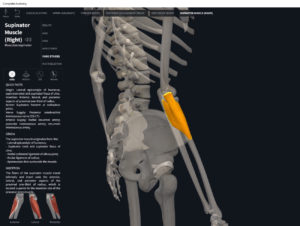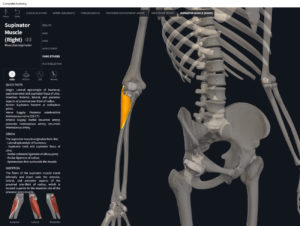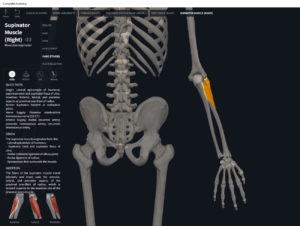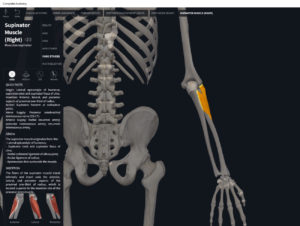Anatomy & Physiology: Muscles—Supinator.
Structure.
- Origin: lateral epicondyle of humerus, and ridge near radial notch of ulna (supinator crest).
- Insertion: lateral surface of proximal 1/3 of radius.
Function.
- Concentric action: forearm supination. Lesser degree: elbow flexion.
- Reverse muscle action: supination; arm flexion; medial rotation of arm at glenohumeral joint.
- Eccentric action: forearm pronation (lesser degree: elbow extension).
- Isometric action: stabilization of the proximal radioulnar joint and elbow.
- Innervation: deep radial nerve.
- Arterial supply: branches off radial artery; interosseus recurrent and posterior interosseus arteries.
Clinical Significance.
References
Biel, A. (2015). Trail guide to the body: A hands-on guide to locating muscles, bones and more.
Cedars-Sinai. (2018). Vertebrae of the spine. Retrieved from https://www.cedars-sinai.org/health-library/diseases-and-conditions/v/vertebrae-of-the-spine.html
Clark, M., Lucett, S., Sutton, B. G., & National Academy of Sports Medicine. (2014). NASM essentials of corrective exercise training. Burlington, MA: Jones & Bartlett Learning.
Jenkins, G., & Tortora, G. J. (2012). Anatomy and Physiology: From Science to Life, 3rd Edition International Stu. John Wiley & Sons.
Muscolino, J. E. (2017). The muscular system manual: The skeletal muscles of the human body.




